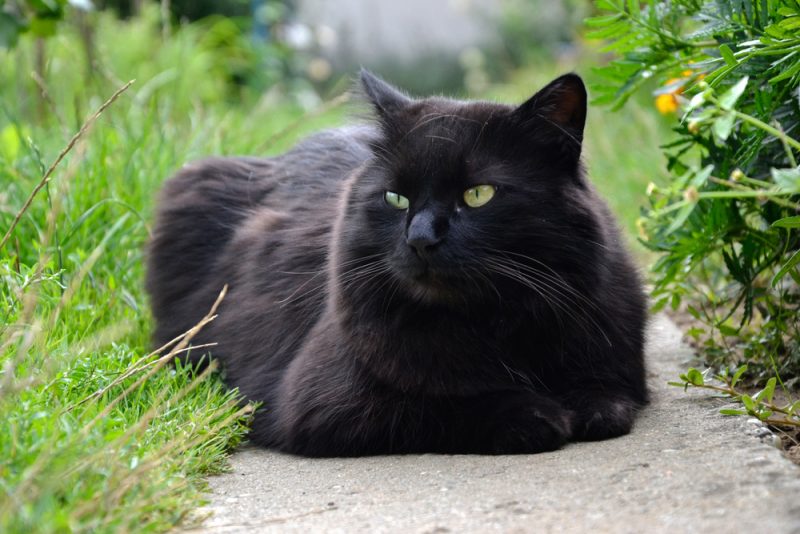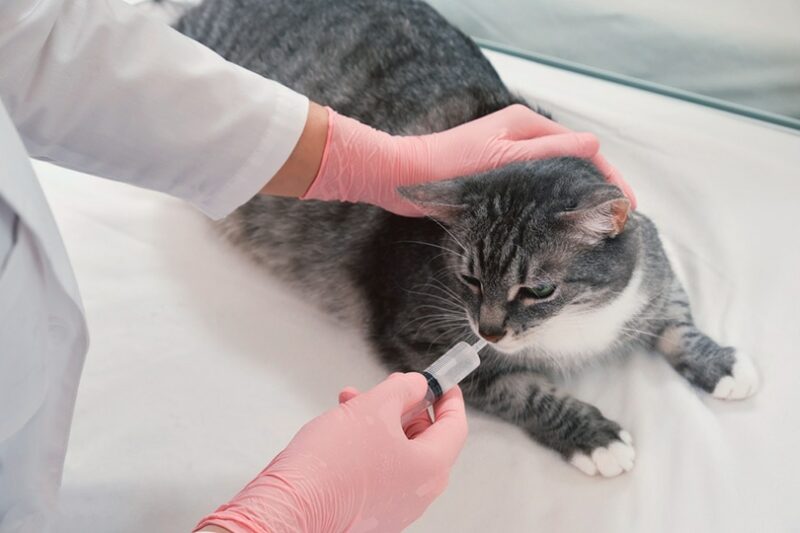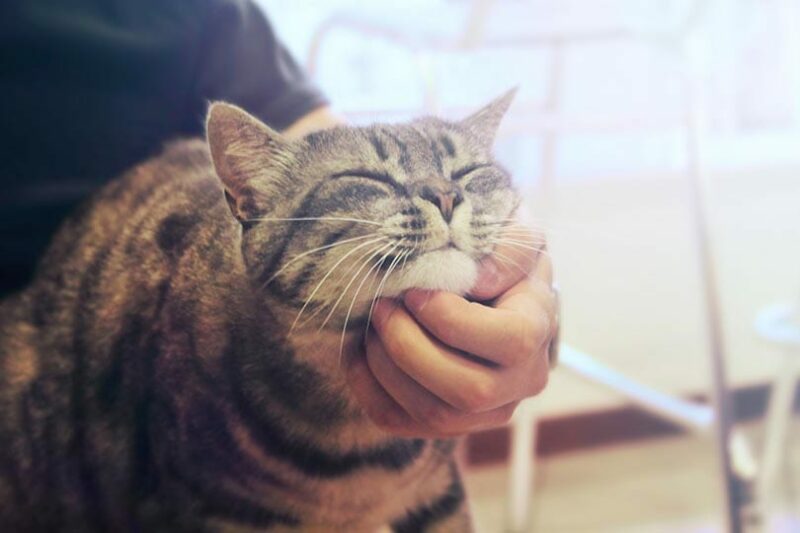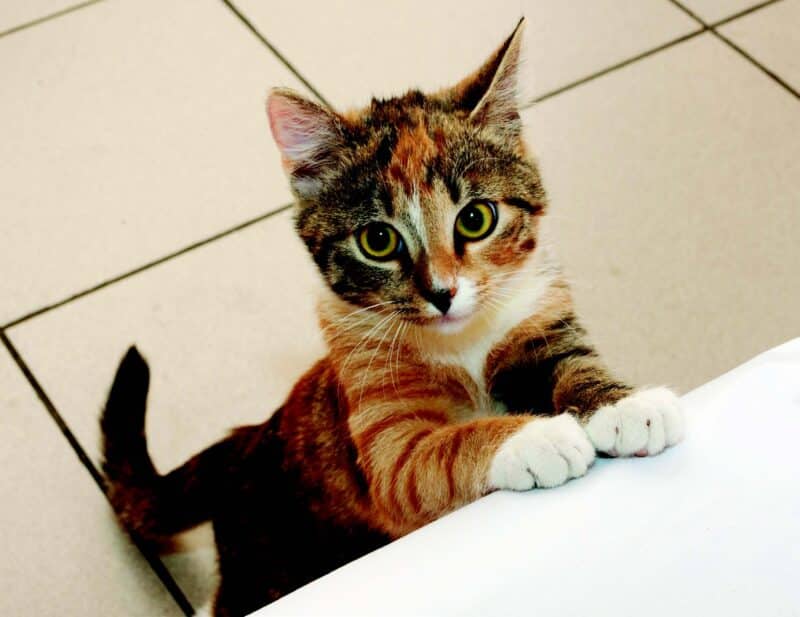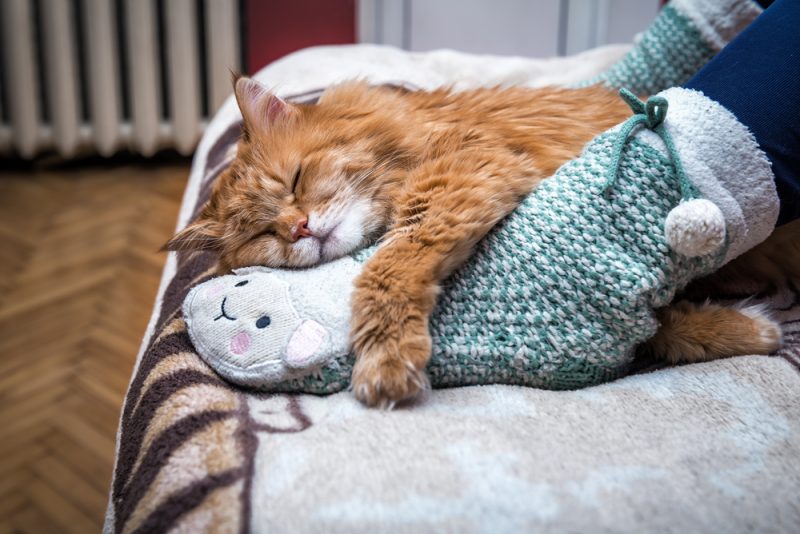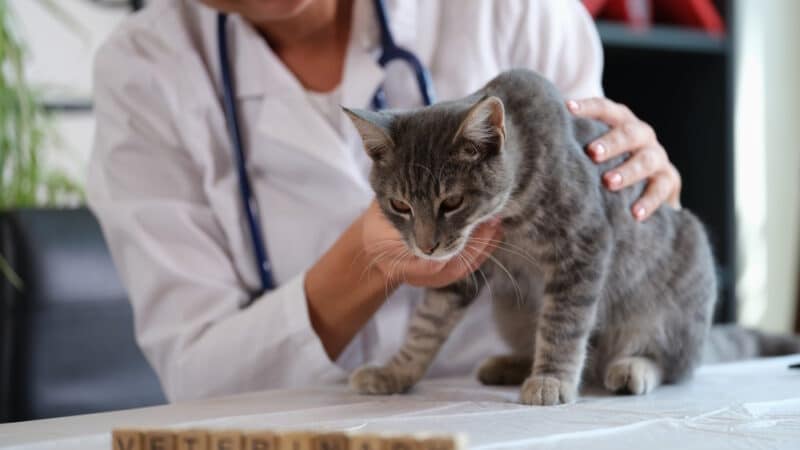In this article
View 8 More +The Chantilly-Tiffany cat is an interesting breed, and they have become quite common and have been around for almost 60 years. They prefer to be around their humans, but they will be happy if left at home during the day.
Breed Overview
Length:
16–20 inches
Weight:
6–12 pounds
Lifespan:
7–16 years
Colors:
Black, chocolate, blue, silver, lilac, platinum, fawn
Suitable for:
Families with children, singles, seniors
Temperament:
Devoted, sweet, gentle
Chantilly-Tiffany cats are relatively low-maintenance in most of their care because they are affectionate but not overly so and don’t require as much time for focused exercise. However, they need to be brushed regularly. Otherwise, Chantilly-Tiffany cats are easy-going, medium-sized cats.
Chantilly-Tiffany Cat Characteristics

Chantilly-Tiffany Kittens
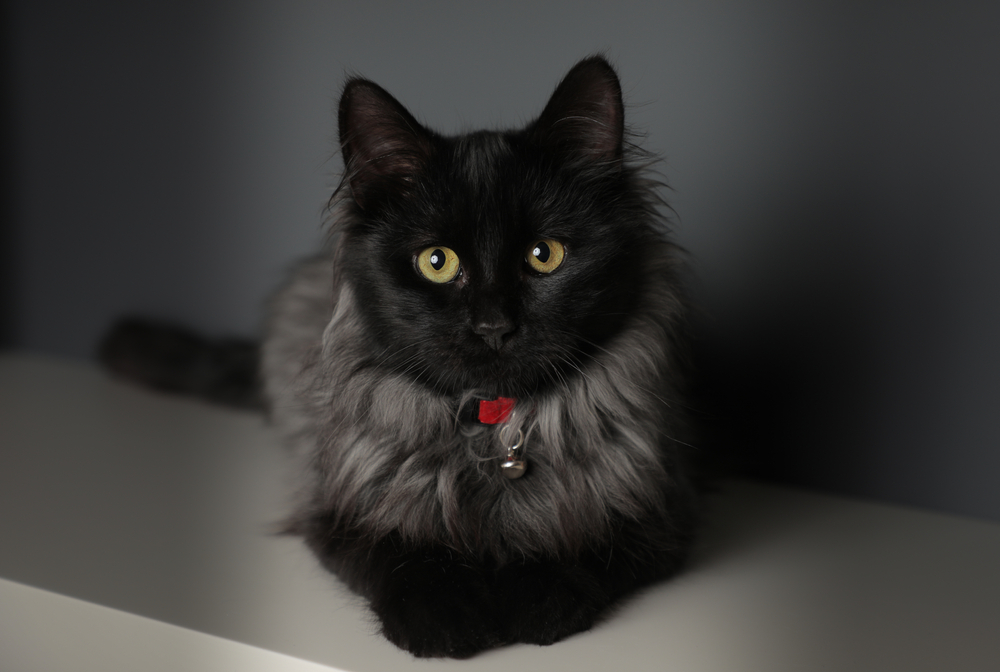
Chantilly-Tiffany cats have always been pretty rare, and they still are. In fact, the breed almost went extinct twice. That being said, it may be hard to find a breeder of these cats, and if you do find one, expect the Chantilly-Tiffany cat price to be a higher than other breeds meaning you may have to travel pay a lot of money for one.
It’s important to seek out a reputable breeder that is knowledgeable of the breed and can answer any questions you may have as well as provide medical records. Since these cats are rare, many backyard breeders and kitten mills may try to sell similar-looking cats under the premise that they are Chantilly-Tiffanys, so make sure to do your research and make sure that the breeder you choose can provide proper paperwork verifying the cat’s breed.

Temperament & Intelligence of the Chantilly-Tiffany Cat
Chantilly-Tiffany cats are devoted to their family and can even demand your attention when you are at home. A Chantilly-Tiffany will suit you well if you like cats but don’t prefer breeds that are more aloof to your presence. They have an adorable habit of talking with their humans. Instead of being obnoxious to get attention, they have quite a sweet voice. They “chirp” when they talk instead of full-on meowing or yowling at you.
Chantilly-Tiffanys enjoy a moderate lifestyle of relaxing with their family when someone is around, playing at times, and getting into trouble with others. They are human-oriented and tend to follow you around from room to room, chattering consistently. Their kittens are known to be more playful and mischievous than most adults.
Are These Cats Good for Families? 👪
These cats are good options for families. They are calm and docile, even from a young age. They are also quite tolerant of being handled in awkward or more demanding ways. Chantilly-Tiffany cats are more kid-friendly than most cats and will be happy in almost any family setting.
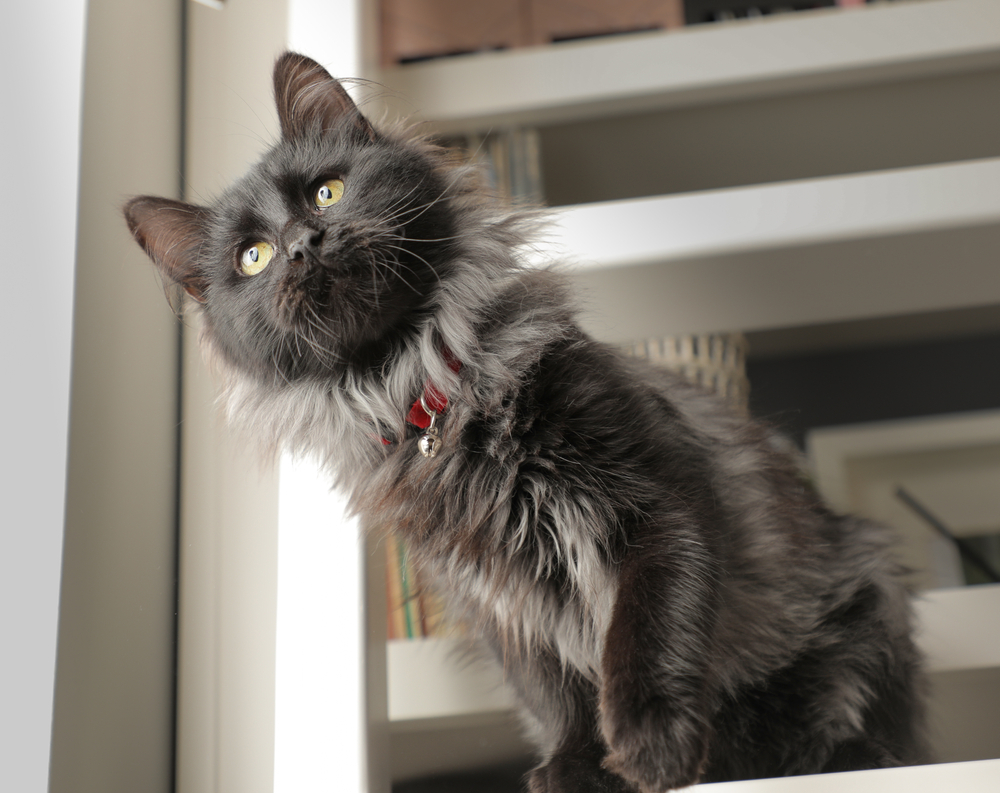
Does This Breed Get Along With Other Pets? 🐶 😽
Chantilly-Tiffanys can get along with other breeds depending on their socialization when they were younger. They are not often territorial but get jealous of their human’s attention. If they think you are giving other animals more attention than they deserve, they will happily swat them away.
When introducing a new animal into your home, don’t automatically assume that these laidback cats will be okay with it. Instead, do it slowly and allow them to become accustomed to the other pet before letting them be around each other unmonitored. Smaller mammals can also be in danger around this cat, no matter how easygoing.

Things to Know When Owning a Chantilly-Tiffany
Food & Diet Requirements 🐡
You will need to monitor the Chantilly-Tiffany’s diet. They can overeat when they get stressed or bored. Since they have long hair, the beginnings of a potbelly can easily be hidden. Like other cats, keeping them on a morning and evening feeding schedule is best.
Take their food away if they haven’t eaten it after 30 minutes. That way, you can monitor precisely how much they eat during the day. It is also best to give them variety. Although they are not demanding cats, they prefer a mixture of dry and wet food.
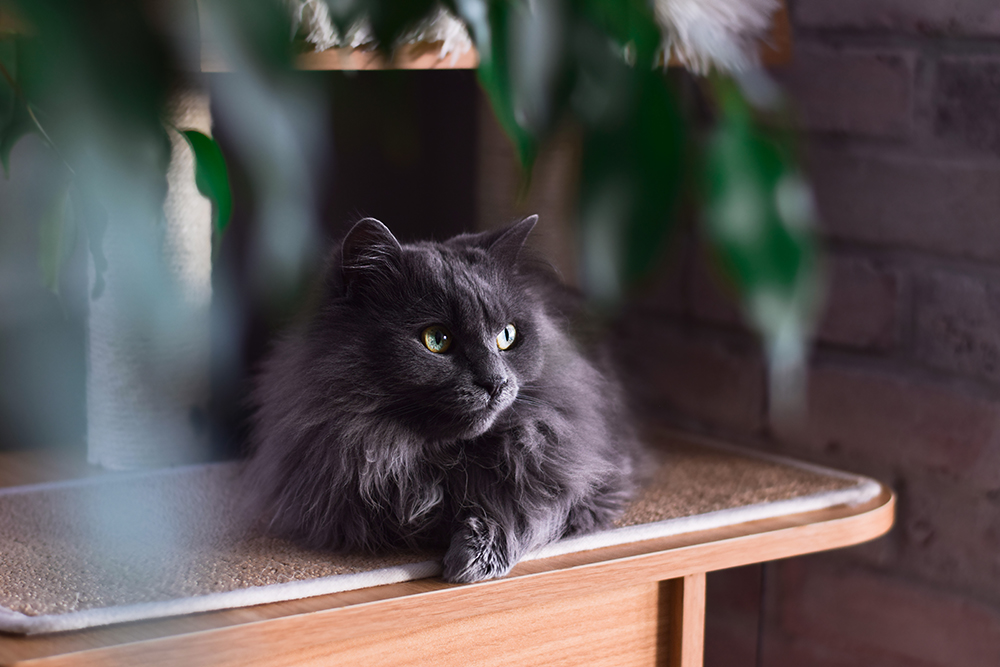
Exercise 🐈
Chantilly-Tiffanys are not overly active cats, especially once they reach full maturity. However, that doesn’t mean that you shouldn’t take the time to exercise them. Encourage active play a couple of times daily for at least 10 minutes each time.
Chantillys enjoy a variety of toys and will typically find one or two that they are fond of. Play with the toys to encourage them, and rotate new toys in and out to maintain their attention.
Training 🧶
Chantilly-Tiffany cats do not have a history of being trained to do much of anything beyond using their litter box, which is intuitive for cats. They do not have long attention spans. Even though they are human-oriented, they prefer to cuddle or nap rather than have a training session.
Grooming ✂️
Grooming the Chantilly-Tiffany is one of the most time-consuming aspects of owning this cat. They have a semi-longhaired coat that is quite fine, so their fur can quickly tangle and get in matted knots if not looked after properly.
By brushing your cat every day, you’ll remove loose hair, reduce hairballs, and strengthen your bond. Most Chantilly-Tiffanys enjoy getting brushed, but you must be careful when working out a particularly gnarled tangle.
Beyond their coat, you need to keep their ears clean. Cats are generally quite good at regulating their nails if they have a scratching post, but you may have to clip them once a month. Brushing their teeth is vital, and you can use dental treats in between brushing.

Health and Conditions 🏥
Chantilly-Tiffany cats usually are healthy cats. However, their long coat with lengthy “furnishings” can get into their ears and cause unfortunate blockages.
- Digestive issues
- Ear infections
- Obesity

Male vs. Female
There are no recognizable differences between males and females in this breed.
3 Little-Known Facts About the Chantilly-Tiffany Cat
1. There is much contention about the time and origin of the Chantilly-Tiffany cat.
There is no clear timeline for exactly how and when these cats came about. Instead, two primary ideas have held the most popularity. One is that the Chantilly was a cross between a Burmese cat and an unknown breed of chocolate brown cats. The idea is that this occurred in the 1980s. Since then, they have been allowed to be outcrossed with certain breeds, but the Burmese is no longer one of them.
The most popular idea concerning their history is that the Chantilly was first bred in 1967 when a cat breeder from New York called Jennie Robinson bought chocolate-brown cats. They were named Thomas and Shirley, and a couple of years later, they produced a litter of adorable brown kittens.
After that, another breeder named Sigyun Lun bought some of the chocolate cats and continued to breed them. She specialized in breeding Burmese cats, hence the false idea that the Chantilly cat resulted from a Burmese cross.
2. Their name is also a source of confusion.
Initially, the cats we now know as Chantilly-Tiffanys were registered only under the name “foreign longhair.” However, as their breeding became more popular, breeders felt the term wasn’t appropriate for the final name. The cats were then charmingly dubbed Tiffanys.
However, when they began to be exported, it was found that a breed crossed with a Chinchilla and a Burmese was also called a “Tiffanie.” Even though the spelling was different, it was thought this would cause too much confusion.
Then, the cat breed was renamed Chantilly, but the name Tiffany was already commonly associated with the breed. That is how they ended up being one of the few breeds with a hyphenated name: the Chantilly-Tiffany.
3. The Chantilly’s eyes deepen in color as the cat ages.
Chantilly-Tiffanys can come in quite a variety of colors due to outcrossing and inbreeding within some of the breed lines. Instead of being predominantly chocolate-colored cats, they can be white, cream, lilac, and blue, to name a few colors.
One of the most iconic parts of this cat is their eye color. They almost always have bright gold eyes. As they age, the color doesn’t stabilize but continues to deepen. As they hit full maturity and go into seniority, they can have golden amber eyes.

Final Thoughts
If you are looking for a devoted cat that will show you plenty of attention when you are around but isn’t too demanding, the Chantilly-Tiffany is a good option. These cats are fairly rare, but they are good at adapting to various families and living situations if you do find one and want to bring it into your home.
Featured Image Credit: Lukas Beno, Shutterstock
